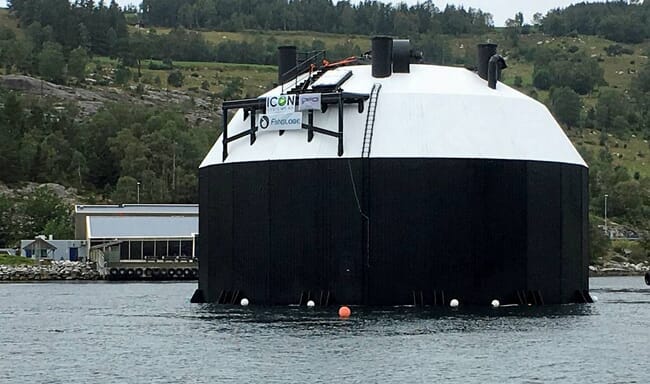Fishglobe’s latest design for a floating closed-containment system has a 2,000 m3 capacity and is capable of holding 200,000 post-smolts of up to 500 grams.
The first 15,000 fish are due to be stocked later this month, where they will be under close observation by Nofima scientists until at least October, at which point – all going to plan – the remainder will be added.

“We will be testing the health and welfare indicators,” Åsa Espmark, senior scientist at Nofima, who is head of ctrlAQUA – research partners in the development project – explains to The Fish Site. “But, to judge from previous versions of the design, we have high expectation that the new system will perform very well.”
Water for the system can be drawn from depths varying from 10 to 30 metres below the surface – a depth where few pathogens, parasites, algae or jellyfish are present. And, as well as having a solid base, Fishglobe is covered above the water too.
“Having a lid means that waves can’t splash into the pen, which makes for added biosecurity, as things like lice, algae and jellyfish can’t enter that way,” Espmark explains. “It also means that the light and temperature can be controlled too, helping to reduce any issues with biofouling.”
While Fishglobe is exceptionally biosecure, the closed nature of the system also means it’s well suited for any treatments that might be required, while oxygen can also be added to the system if needed.
Fishglobe is, according to Espmark, the most advanced closed-containment system to have been built in the world to date and the company has partnered with Grieg Seafood, who will be providing the first cohort of salmon to be grown in the system.
“It remains to be seen whether it is commercially viable,” says Espmark, “but there’s a good chance as long as there are no fish welfare issues."



